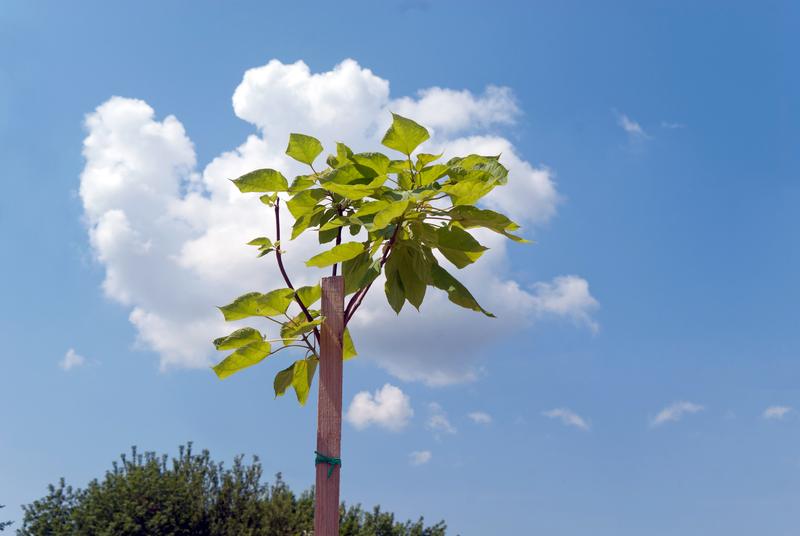Gardening: Turning the Battle Against Climate Change Green
Posted on 03/07/2025
Gardening: Turning the Battle Against Climate Change Green
Gardening has always been associated with the joy of nurturing plants and beautifying our homes. Yet, in today's rapidly changing climatic situation, gardening for climate change mitigation is more than just a leisure activity -- it's an important green revolution every homeowner, city, and community can embrace.
As the world seeks effective ways to reduce greenhouse gases, climate-smart gardening is emerging as a powerful and readily accessible solution. By transforming ordinary backyards and community spaces, individuals have the chance to turn the tide against global warming. In this comprehensive article, we'll explore how gardening helps combat climate change, practical strategies for eco-friendly gardening, and how you can start making a difference right from your garden.
- Understanding Gardening and Climate Change
- Gardens as Carbon Sinks: The Power of Plants and Soil
- Top Climate-Conscious Gardening Practices
- Urban Gardening: Greening the Concrete Jungle
- Gardening to Support Biodiversity and Wildlife
- The Collective Power of Community Gardens
- How to Start a Greener, More Climate-Friendly Garden
- Conclusion: Growing a Greener Future
Understanding Gardening's Role in Climate Change
Climate change is primarily driven by the accumulation of greenhouse gases, such as carbon dioxide (CO2), methane, and nitrous oxide in our atmosphere. Human activities, from burning fossil fuels to large-scale agriculture, contribute to this crisis. Many people are surprised to learn that gardening can either worsen or alleviate the problem, depending on the way it's done.
Every garden has the potential to influence the environment. With sustainable gardening methods, we can enhance the earth's natural processes, improving local resilience and fighting back against the effects of climate change. Conversely, overuse of chemicals, water, and non-native plants can create environmental harm.
- Gardening contributes to carbon capture and storage through photosynthesis and healthy soil management.
- Gardens can cool urban microclimates, reducing the heat island effect in cities.
- Locally-grown food reduces the carbon footprint associated with transportation and industrial agriculture.
Gardens as Carbon Sinks: The Power of Plants and Soil
A carbon sink is any natural environment that absorbs more carbon than it releases. Well-managed gardens act as powerful carbon sinks, thanks to the life cycles of plants and healthy ecosystems below ground.
Here's how:- Photosynthesis: Plants absorb CO2 from the air, converting it to sugars and oxygen. This not only supports plant growth but also locks away atmospheric carbon.
- Soil Carbon Storage: A rich, healthy soil teems with microbes and organic matter, trapping carbon beneath the surface. Composting, mulching, and reduced tillage help maintain this process.
- Tree Planting: Trees store significant amounts of carbon throughout their long lifespans, making them major allies for gardeners wanting to buffer climate change.
According to the Intergovernmental Panel on Climate Change (IPCC), soil contains more carbon than the world's plants and atmosphere combined. By nurturing our gardens correctly, we enhance the earth's ability to lock away climate-damaging gases.
Top Climate-Conscious Gardening Practices
The adoption of *climate-friendly gardening techniques* is key to maximizing your garden's positive impact. Let's explore some of the best strategies for turning your battle against climate change green:
1. Embrace Native and Climate-Resilient Plants- Native plants are adapted to local climate conditions, requiring less water and fewer chemicals. They support local wildlife and are often more resilient to extreme weather.
- Choose climate-resilient varieties that can withstand heat, drought, or intense rainfall, ensuring your garden continues to thrive as conditions change.
- Organic gardening avoids synthetic fertilizers and pesticides, reducing pollution and supporting vital soil life.
- No-dig methods maintain soil structure, enhance microbial activity, and minimize soil carbon loss to the atmosphere.
- Composting garden and kitchen waste turns organic material into rich humus. This boosts soil carbon and nutrients without the need for factory-made fertilizers.
- Mulching with leaves, straw, or woody chips helps retain soil moisture, suppresses weeds, and reduces the need for commercial fertilizers.
- Collect rainwater using barrels -- this reduces demand on municipal water systems and is better for plants.
- Install drip irrigation or soaker hoses to deliver water directly to roots, minimizing waste.
- Repurpose old containers for planters, use recycled materials for raised beds, and opt for biodegradable twines and supports.
- Limit new plastic purchases and seek out sustainable gardening tools and products.
- Homegrown produce eliminates the carbon footprint associated with transporting and packaging store-bought foods.
- Set up a vegetable patch or herb spiral, even if you only have a small balcony or patio.
Urban Gardening: Greening the Concrete Jungle
Cities are at the frontlines of climate change, suffering from hotter temperatures, air pollution, and reduced green space. That's where urban gardening comes in -- turning rooftops, balconies, and vacant lots into productive, green oases.
- Rooftop gardens and green walls cool buildings, lower energy requirements for air conditioning, and filter air pollutants.
- Community allotments allow city dwellers to grow food locally, reducing the carbon footprint and fostering social connection and awareness.
- Window boxes and vertical gardens expand green space even in the smallest apartments.
Modern cities around the world, from Singapore's "city in a garden" initiative to the New York High Line, demonstrate that transforming urban environments is both possible and beneficial.
Gardening to Support Biodiversity and Local Wildlife
An ecologically diverse garden does more than trap carbon -- it also supports pollinators and local wildlife, which are crucial to a balanced and robust environment. Species loss is another aspect of the climate crisis, as changing climates and human development threaten the habitats wildlife depend on.
How can you make your garden a wildlife haven?- Plant a range of flowers for bees, butterflies, and other pollinators, ensuring blooms throughout the seasons.
- Provide shelter with native shrubs, trees, piles of logs, and undisturbed corners for insects and small animals.
- Avoid pesticides and synthetic chemicals, which disrupt food webs and harm beneficial species.
- Add a water source, like a small pond or birdbath, to support amphibians and invite birds.
Supporting biodiversity through gardening nurtures a healthy ecosystem and boosts climate resilience by encouraging natural predators and restoring ancient food chains.
Community Gardens: The Power of Collective Action
Community gardening adds another layer to the climate fight. When neighbours join forces to create communal gardens, they multiply the benefits:
- More green space for carbon capture, food production, and biodiversity.
- Increased education and awareness about sustainable, climate-smart practices.
- Opportunities for composting large amounts of organic waste.
- Creation of cooling zones in hot urban neighbourhoods.
- Social networks that inspire broader environmental change and action.
Many cities offer community plot rentals or garden cooperatives, making it accessible for everyone -- even those without a yard. Some initiatives incorporate educational activities, seed swaps, and group composting projects, fostering more resilient communities.
How to Start Your Own Greener, Climate-Friendly Garden
Transforming your gardening routine can feel overwhelming, but every positive change -- no matter how small -- helps turn the battle against climate change green. Here are steps to get started:
- Assess your space: Balcony, backyard, or windowsill? Every space has potential!
- Research local flora: Identify native plants and drought-tolerant species suitable for your region.
- Enrich your soil: Start a compost bin, use organic amendments, and avoid chemical fertilizers.
- Set up water systems: Install rain barrels, choose efficient watering techniques, and mulch your beds.
- Grow edibles: Try easy-to-grow vegetables and herbs, and enjoy a local, zero-mile harvest.
- Connect with others: Join a local community garden or seek inspiration from online gardening groups.
- Monitor and adapt: Observe your garden, note what works and what doesn't, and adjust for the changing climate as needed.
Every step counts, and as you become more experienced, your impact will grow!
Conclusion: Growing a Greener Future, One Garden at a Time
More than ever, gardening for climate change is a powerful, practical, and rewarding way to help protect the earth and build a healthier ecosystem. Whether you're planting a single tree, nurturing a patch of wildflowers, or working with others in a community garden, your green efforts directly impact the bigger environmental picture.
By embracing climate-smart gardening, we can turn the battle against climate change green -- quite literally. As gardeners, we have a unique opportunity and responsibility to sequester carbon, support biodiversity, conserve resources, and inspire sustainable living within our communities. Let's start digging, planting, and growing our way towards a brighter, more climate-resilient future -- together.
Related Keywords:
- Climate-smart gardening techniques
- Gardening to fight climate change
- Eco-friendly gardening practices
- Gardening for carbon sequestration
- Gardening and global warming
- Green urban gardening
- Gardening to reduce carbon footprint
Remember: Every green thumb makes a difference in the climate challenge. Start gardening for the planet today!



